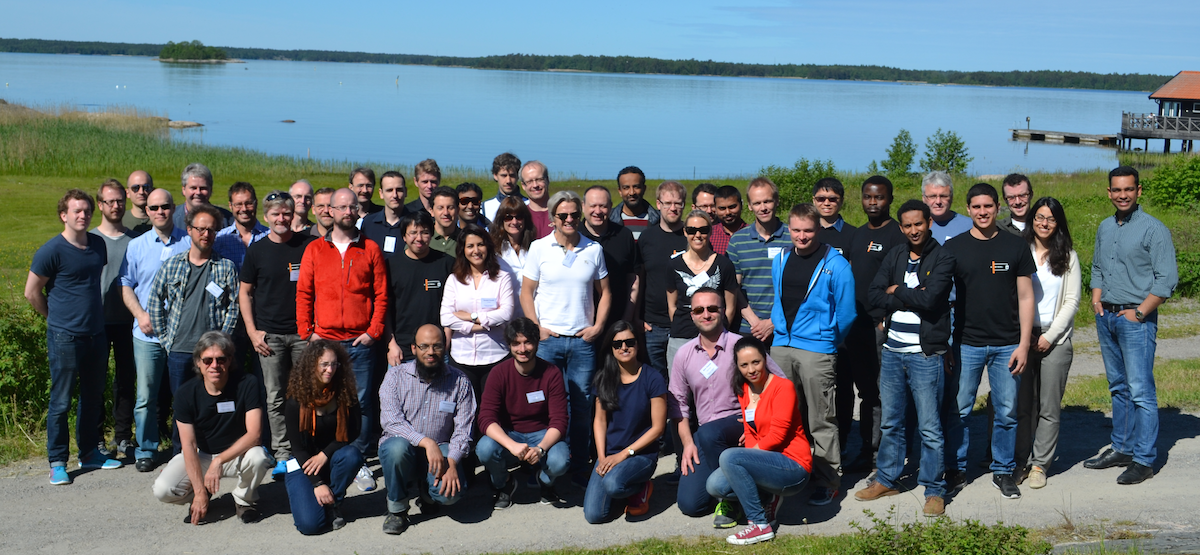
Workshop Program
Keynotes
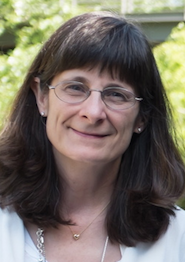
Anne Holler, VMware
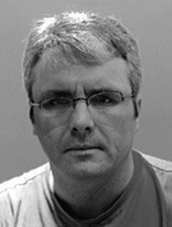
Joe Butler, Intel

Bruno Sinopoli, Carnegie Mellon
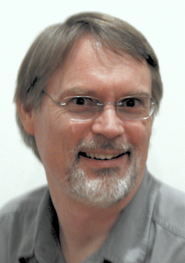
John Wilkes, Google
The workshop is held at the small Island Nässlingen in the Stockholm Archipelago.
The 7th Cloud Control Workshop is aimed to foster multidisciplinary research in cloud management, leveraging expertise in areas such as autonomic computing, control theory, distributed systems, energy management, machine learning, mathematical statistics, performance modeling, systems management, etc. By providing an understanding of the research challenges ahead and by fostering multi-disciplinary research collaborations, the ambition is to shape the future of cloud management. Expected attendees are leading researchers from any scientific discipline with potential to contribute to this multidisciplinary topic.
Workshop format
The workshop format will be to mainly focus on multi-disciplinary research discussions in parallel sessions but also include some short scientific presentations on planned, ongoing, or completed research. All participants are encouraged to propose discussion topics on before hand and to take active part in any discussions with the ambition to make progress on any topic of interest to the participants. (For illustration of a typical workshop program, see the programs for the 2nd, 3rd, and 5th edition of this workshop.) Compared to recent events in this series, the 7th edition will strive for an even stronger focus on cloud management using the techniques listed above, rather than on cloud in general.
Program
The workshop presentations include four keynotes, 5 invited short presentations, 6 very short presentations by young researchers, and 11 longer discussion sessions (most held in 3-way parallel session).
Workshop Program
Instructions for discussion leaders
Keynote Speakers
Anne Holler, VMware
Hybrid Cloud Control: Scheduling workloads across enterprise datacenters and the off-premise cloud
Private datacenters are typically provisioned to accommodate projected peak resource demand. When peak is significantly higher than average demand, such datacenters are inefficiently used, and when peak demand increases every year, continuing to provision enterprise datacenters for peak is difficult to sustain. The hybrid cloud model, in which off-premise resources are purchased to extend enterprise datacenters, promises to reduce the continued growth in capital expenses needed to fully accommodate peak. To exploit the hybrid cloud model, customers would like to use their sunk-cost enterprise datacenter resources when possible and to only use cloud resources when their enterprise datacenters are too busy and only for workloads complying with their company’s hybrid cloud usage policies. Customers would also like workload placement decisions to be automated, to allow seamless operation at scale. This talk presents HybridDRS, a resource scheduler that performs seamless burst scheduling from customers’ enterprise datacenters to an off-premise cloud. HybridDRS makes placement decisions that balance placement constraints, resource availability, and cost across the candidate placement targets.
Biography. Anne Holler is a Principal Engineer at VMware, working in resource management. She designed and implemented elements of VMware’s Distributed Resource Schedulers for servers and storage and Distributed Power Management, followed by leading a team working on resource management to maintain application SLAs using Machine Learning. She is currently working on burst scheduling from enterprise datacenter(s) to vCloud Air. Before working in resource management, she did performance analysis for VMware’s hypervisor and hosted products. Prior to joining VMware in 2002, she worked at Omnishift on transparent application and data delivery over the web to the desktop, at Transmeta on Crusoe performance and power, and at Hewlett-Packard on low-level compiler optimization and performance for the PA-RISC and Itanium processors. Anne received bachelors and masters degrees from Duke University, and a doctorate from University of Virginia, all in Computer Science.
Joe Butler, Intel
High-resolution representation of the infrastructure and service landscapes, why and how
Workload placement, capacity planning and run-time adjustment typically operate with reference to an asset-list style resource inventory. While this approach has proven effective in dealing with bounded service and workload ranges, it falls short when more complex service and infrastructure combinations become relevant. The trends toward micro-service architectures and heterogeneous infrastructures including storage, compute accelerators, and specialisations expose the need for a richer view of the landscape. Key issues such as efficiency and return-on-investment are more readily addressed when the landscape representation incorporates contextual details such as capacity, utilization over time and effective performance. Intel Labs are exploring approaches to automatically deriving and maintaining detailed landscape views and using them as a basis for analytics-supported intelligent orchestration.
Biography. Joe Butler is a Principal Engineer with Intel Labs and Director of Intel Labs Europe Cloud Services Lab. Joe leads the labs research on orchestration for service delivery. Joe is actively involved in collaborative research under the European Framework Mechanisms and participates in Framework working groups, is Intel’s representative on the board of the Big Data Value Association, on the Steering Board of the NESSI ETP (European Technology Platform for Software, Services and Data) and a member of the Industry Steering Board of the Irish Centre for Cloud Computing and Commerce (IC4). Earlier in his career, Joe held positions as an IT research lead, and worked on development and deployment of station controllers, material handling and decision support systems for factory automation at Intel.
Bruno Sinopoli, Carnegie Mellon
A Control-Theoretic Approach for Dynamic Adaptive Video Streaming over HTTP
User-perceived quality-of-experience (QoE) is critical in Internet video applications as it impacts revenues for content providers and delivery systems. However, there is little support in the network for optimizing such measures and bottlenecks could occur anywhere in the delivery system (e.g., content delivery network, user home, ISP). Consequently, a robust bitrate adaptation algorithm in client-side video players is critical to ensure good user experience. This is a key problem for the Internet video ecosystem as new standards for dynamic adaptive streaming over HTTP (DASH) are emerging.
Previous studies by leading commercial providers (e.g., YouTube, NetFlix, Conviva) and academic efforts have shown key limitations of state-of-art commercial solutions and proposed a broad spectrum of heuristic fixes. Despite the emergence of several proposals, there is still a distinct lack of consensus on (a) how best to design this client-side bitrate adaptation logic (e.g., use rate estimates vs. buffer occupancy); (b) how well specific classes of ap- proaches will perform under diverse operating regimes (e.g., high variability); or (c) how they actually balance different Quality-of-Experience (QoE) objectives (e.g., startup delay vs. buffering).
In this work, we formalize the DASH problem through the “lens” of control theory and develop a principled control-theoretic model to reason about a broad spectrum of adaptation strategies. We propose a novel model predictive control algorithm that can optimally combine bandwidth and buffer-size information to significantly outperform traditional approaches in common conditions. Finally, we describe a practical implementation of this algorithm in the industry-reference video player DASH.js to confirm the validity of the approach in real world scenarios.
Biography. Bruno Sinopoli received the Dr. Eng. degree from the University of Padova in 1998 and his M.S. and Ph.D. in Electrical Engineering from the University of California at Berkeley, in 2003 and 2005 respectively. After a postdoctoral position at Stanford University, Dr. Sinopoli joined the faculty at Carnegie Mellon University where he is an associate professor in the Department of Electrical and Computer Engineering with courtesy appointments in Mechanical Engineering and in the Robotics Institute and co-director of the Smart Infrastructure Institute, a research center aimed at advancing innovation in the modeling analysis and design of smart infrastructure. Dr. Sinopoli was awarded the 2006 Eli Jury Award for outstanding research achievement in the areas of systems, communications, control and signal processing at U.C. Berkeley, the 2010 George Tallman Ladd Research Award from Carnegie Mellon University and the NSF Career award in 2010. His research interests include networked embedded control systems, distributed estimation and control with applications to wireless sensor-actuator networks and Cyber-physical systems security.
John Wilkes, Google
Large-scale cluster management at Google with Borg
Google’s Borg system is a cluster manager that runs hundreds of thousands of jobs, from many thousands of different applications, across a number of clusters each with up to tens of thousands of machines. It achieves high utilization by combining admission control, efficient task-packing, over-commitment, and machine sharing with process-level performance isolation. It supports high-availability applications with runtime features that minimize fault-recovery time, and scheduling policies that reduce the probability of correlated failures. Borg simplifies life for its users by offering a declarative job specification language, name service integration, real-time job monitoring, and tools to analyze and simulate system behavior.
Biography. John Wilkes has been at Google since 2008, where he is working on cluster management and service level agreements for infrastructure services. He is interested in far too many aspects of distributed systems, but a recurring theme has been technologies that allow systems to manage themselves. He received a PhD in computer science from the University of Cambridge, joined HP Labs in 1982, and was elected an HP Fellow and an ACM Fellow in 2002 for his work on storage system design. Along the way, he’s been PC chair for SOSP, FAST, EuroSys and HotCloud, and serves on the steering committees for SoCC. He’s listed an inventor on 41 US patents, and has an adjunct Professor appointment at Carnegie-Mellon University. In his spare time he continues, stubbornly, trying to learn how to blow glass.
Workshop Details
The workshop will take place at Nässlingen in the Swedish Archipelago. This is a small and beautiful location that will provide not only excellent conditions for the workshop sessions but also a relaxed atmosphere for further discussions or outdoor activities during the long summer nights. As the facilities are rather small, the number of participants will be limited and we will ask people to stay in double rooms if possible.
For travel, a bus will be chartered to and from Arlanda airport (preliminary) as follows:
- Bus departure from Arlanda: June 9 at 8.20 (or as soon as possible thereafter, to meet arrival times of flights scheduled to arrive Arlanda until 8.05). Pick-up location is just outside domestic Terminal 4.
- Bus arrival at Arlanda: June 11 at 16.30 (for departure with flights 17.25 or later)
The final leg of the travel to Nässlingen will be a very short boat ride from Åsättra Pier at Ljusterö, preliminary at 9.50 on June 9. In case not joining the bus from Arlanda, you can join at Åsättra. On return, the bus will leave from Åsättra Pier, preliminary on June 11 at 14.45.
Outdoor activities
There will be opportunities for outdoor activities. Some may be good to know in advance, in case special clothing or equipment is needed. Please, see the Nässlingen activities page.
Interested to participate?
If interested to participate, please send an email to Erik Elmroth (elmroth@cs.umu.se). Please, note, however, that the number of participants is limited.
Workshop fee
The workshop fee includes besides workshop participation also accommodation in double or single room, all lunches, dinners, and coffees, as well as transportation in the shared bus to and from Arlanda airport and the final boat trip to Nässlingen. The fee is 4300 SEK in double room and 4900 SEK in single room, excluding taxes. In order to provide room for as many participants as possible, we appreciate people’s willingness to share double rooms.
Program Committee
Erik Elmroth, Umeå University (Workshop Chair)
Rolf Stadler, Royal Institute of Technology (Local Chair)
Ahmed Ali-ElDin, Umeå University
Maria Kihl, Lund University
Mina Sedaghat, Umeå University
Karl-Erik Årzén, Lund University
Sponsors
Financial support for the workshop has been received by eSSENCE – The e-science collaboration.
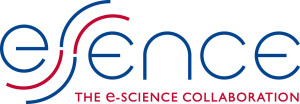
Participants
